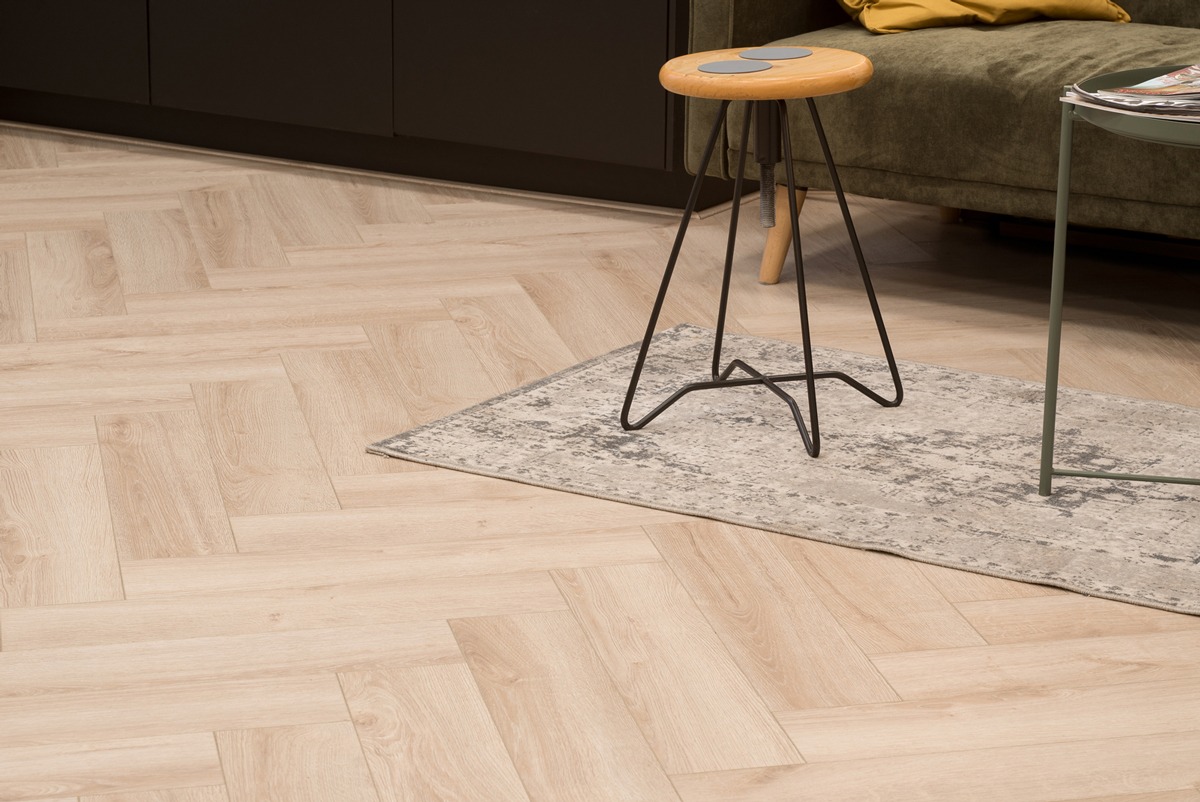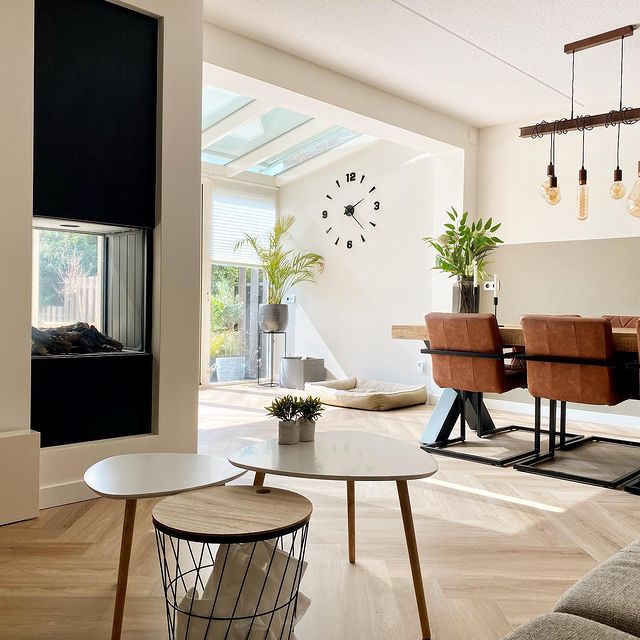You’re about to choose a new floor—exciting! But then comes the big question: can you extend that floor into other rooms? Or do you have to stop at the doorway like it’s a border crossing? We’re here to guide you through the world of continuous flooring. And we’ll explain exactly how it works for Laminate, Vinyl, Click Vinyl, and Hybrid Wood.
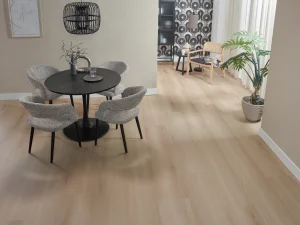
Continuing Your Floor into Other Rooms
The charm of a continuous floor? Peace and spaciousness! Having one floor throughout your entire home—from living room to kitchen, hallway, and bedroom—creates a seamless and unified look. But whether this is technically possible depends on the type of flooring. Some floors can’t be installed continuously without limits, which means you’ll need thresholds or transition profiles in between.
Why Can’t You Always Extend Flooring Into Other Rooms?
It sounds ideal: one floor flowing effortlessly from the living room into the guest room. But in practice, it doesn’t always work that way. Many types of flooring respond to temperature and humidity changes. Especially laminate and wooden floors—they expand or contract, a natural process known as “movement.” And that movement needs space. If you install a floor over too large an area without interruption, tension can build up. The result? Creaking floors, buckling planks, or gapping joints. Not exactly the look you’re going for.
That’s why some types of flooring have a maximum length or width that can be installed without interruption. If you go beyond that, a threshold or expansion profile is the solution to prevent damage. Fortunately, this is much less of an issue with floors like click vinyl or glue-down vinyl. These are more stable, water-resistant, and barely affected by movement. Ideal for anyone who truly wants a floor that flows seamlessly throughout the entire home.
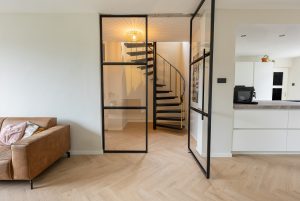
How far can you extend a vinyl floor?
Dreaming of a floor without thresholds or transition strips? Then vinyl is your best friend. These floors are:
-
Stable and water-resistant
-
Almost unaffected by expansion and contraction
-
Ideal for underfloor heating and humid areas
Extending Dryback Vinyl
A dryback vinyl floor is, as the name suggests, directly glued to the subfloor. This makes the floor extremely stable. The big advantage? You can basically extend it without limits—no maximum length or width. So, no transition profiles needed!
Extending Click Vinyl
Click vinyl uses a click system and is slightly more sensitive to expansion than the dryback version. Still, you can extend this floor quite far as well. The maximum is 400 m² for Click Vinyl floors. If you go beyond that, an expansion profile is a smart solution. But let’s be honest: 400 m²? You’d have to really try hard to reach that. Chances are, you won’t even hit that limit.
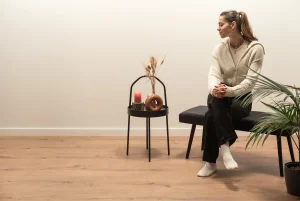
How far can you extend laminate flooring?
Laminate is super popular, and we totally get why! But it’s a bit more sensitive to expansion and contraction. Temperature changes and humidity cause laminate to expand or shrink. That’s why laminate usually has a maximum continuous area you can cover without breaks. Unlike click vinyl, where the limit is based on total surface area, laminate flooring mainly works with a maximum length and width: 10 meters long and 10 meters wide.
If you go beyond that, a transition profile is essential to prevent problems. Don’t worry — nowadays, there are plenty of stylish profiles in all kinds of colors and designs, so a threshold doesn’t have to be an eyesore at all.
Can you extend Hybrid Wood flooring over long distances?
Hybrid wood floors are made from real wood, and yes — wood expands and contracts. So unfortunately, you can’t extend these floors endlessly if they are installed as a floating floor. Just like laminate, there’s a maximum of 10 meters in width and 10 meters in length. If you go beyond that, you know what to do: it’s time for an expansion profile! When the floor is glued down, there’s no limit to the number of square meters you can cover.

Floor Installation Without Worries
A continuous floor truly unifies your home and creates a calming atmosphere. However, it’s important to know which flooring best suits your needs and your home. Vinyl offers the most freedom to install large areas without interruptions, while laminate and hybrid wood require more attention to proper finishing with expansion joints on larger surfaces. Keep this in mind to avoid problems and enjoy a beautiful floor for years to come.

